Originally posted on December 20, 2023 @ 4:30 pm
Are you curious if food stamps, also known as the Supplemental Nutrition Assistance Program (SNAP), can be used to purchase vitamins and dietary supplements? Let’s dive into the SNAP program’s guidelines and find out.
Unfortunately, vitamins and dietary supplements are not covered by SNAP benefits. The SNAP program is designed to provide assistance for purchasing essential food items, but it does not extend to nutritional supplement purchases.
Table of Contents
Key Takeaways:
- Food stamps cannot be used to purchase vitamins and dietary supplements under the SNAP program’s guidelines.
- The SNAP program allows households to purchase a variety of food items for their nutritional needs.
- Eligible foods include fruits, vegetables, meat, poultry, fish, dairy products, breads, cereals, snack foods, non-alcoholic beverages, seeds, and plants that produce food.
- Ineligible items for purchase with food stamps include vitamins, supplements, alcoholic beverages, tobacco products, live animals (with exceptions), and nonfood items such as pet food and cleaning supplies.
- Efforts are being made to include multivitamins and dietary supplements in the SNAP program in the future.
What Items Can Be Purchased with Food Stamps?
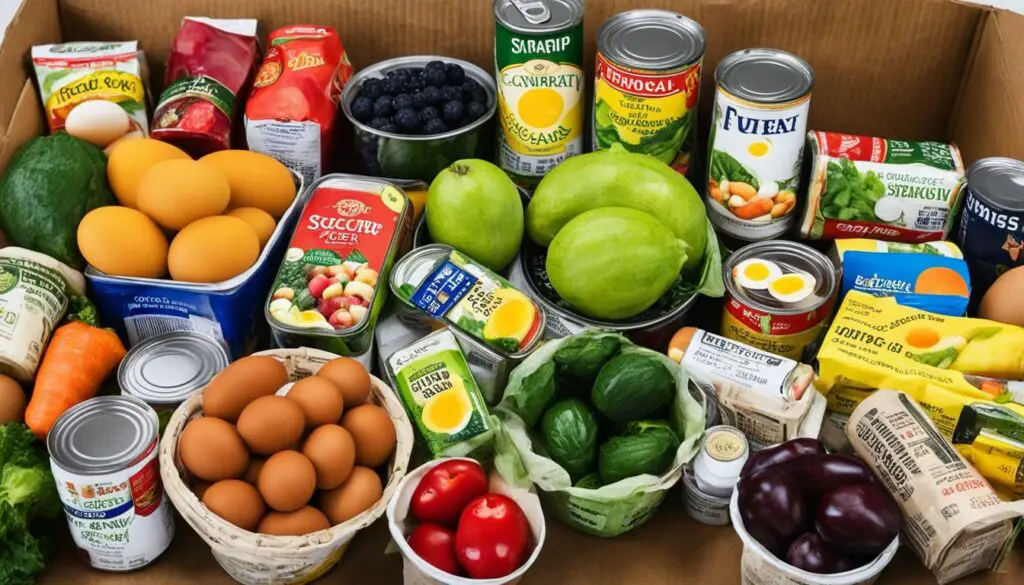
When it comes to purchasing items with food stamps, households have a wide range of options to choose from. Food stamps, also known as the Supplemental Nutrition Assistance Program (SNAP), can be used to buy essential food items that contribute to a healthy and balanced diet.
Eligible items that can be purchased with food stamps include:
- Fruits and vegetables
- Meat, poultry, and fish
- Dairy products
- Breads and cereals
- Snack foods
- Non-alcoholic beverages
- Seeds and plants that produce food for the household
The SNAP program aims to ensure that low-income individuals and families have access to nutritious food options. By allowing the purchase of a variety of food items, SNAP benefits contribute to the overall well-being of recipients and help address food insecurity.
To illustrate the range of eligible items, here is a visually engaging table:
Examples of Eligible Food Items
| Food Category | Examples |
|---|---|
| Fruits and Vegetables | Apples, oranges, carrots, broccoli |
| Meat, Poultry, and Fish | Chicken, ground beef, salmon |
| Dairy Products | Milk, cheese, yogurt |
| Breads and Cereals | Whole wheat bread, rice, pasta |
| Snack Foods | Granola bars, popcorn, crackers |
| Non-Alcoholic Beverages | Water, juice, tea |
| Seeds and Plants | Tomato plants, herb seeds, lettuce |
By knowing the eligible items, households can make informed decisions and maximize the benefits provided by the SNAP program.
Items Not Eligible for Purchase with Food Stamps

While food stamps, also known as the Supplemental Nutrition Assistance Program (SNAP), provide crucial support for households to purchase food, there are certain items that cannot be bought using these benefits. It’s important to be aware of these restrictions to make informed choices when using food stamps.
Vitamins, Medicines, and Supplements
Vitamins, medicines, and dietary supplements are not eligible for purchase with food stamps. These items, which include multivitamins, mineral supplements, and herbal remedies, are not considered essential food items by the SNAP program’s guidelines. Therefore, they cannot be bought using food stamps.
Alcoholic Beverages and Tobacco Products
Alcoholic beverages and tobacco products are also not eligible for purchase with food stamps. The SNAP program aims to provide assistance for necessary food items, and these products fall outside the scope of allowable purchases.
Live Animals and Nonfood Items
Additionally, live animals (with some exceptions) and nonfood items such as pet food, cleaning supplies, and cosmetics are not eligible for purchase with food stamps. The SNAP program focuses on providing support for essential food items to ensure nutrition for individuals and families.
It’s important to note that these restrictions aim to prioritize the nutritional needs of SNAP beneficiaries and prevent misuse of the benefits. While vitamins, medicines, supplements, alcoholic beverages, tobacco products, live animals, and nonfood items are not eligible for purchase with food stamps, there is a wide range of food items that can be bought with SNAP benefits.
The SNAP Program Overview
The Supplemental Nutrition Assistance Program (SNAP) is a federal program that provides food assistance to low-income Americans. It is the largest nutrient program, estimated to help feed 9.5 million families with children. SNAP helps ensure that individuals and families have access to nutritious food and helps alleviate hunger.
Snap Program, also known as food stamps, was established to assist low-income Americans in purchasing food. It aims to provide individuals and families with the means to obtain a well-balanced diet, promoting health and alleviating hunger. SNAP benefits are provided in the form of an Electronic Benefit Transfer (EBT) card, which can be used to purchase eligible food items at approved retailers.
“Through the SNAP program, we are able to provide vital food assistance to millions of low-income Americans. It is a significant step towards addressing food insecurity and ensuring that everyone has access to nutritious meals.”
SNAP Benefits at a Glance
Here are some key points about the SNAP program:
- SNAP benefits are available to individuals and households with limited income and resources.
- Benefit amount is determined based on factors such as household size, income, and expenses.
- SNAP benefits are intended to be a supplement to a household’s food budget, helping to fill the gap between income and necessary food expenses.
- Eligible foods include fruits, vegetables, dairy products, meats, fish, poultry, bread, cereals, and non-alcoholic beverages.
- SNAP benefits cannot be used to purchase non-food items, alcohol, tobacco, vitamins, or supplements.
SNAP is administered by the United States Department of Agriculture (USDA) and operates in all states. Eligibility and benefit amounts may vary slightly from state to state, but the overall goal remains the same – to provide food assistance to those in need.
How the SNAP Program Helps Low-Income Families
The SNAP program plays a crucial role in supporting low-income families by easing the burden of food expenses. By providing financial assistance for purchasing nutritious food, SNAP helps ensure that individuals and families have access to the sustenance they need for a healthy and balanced diet.
This program also helps improve the overall well-being of low-income Americans by promoting nutrition and reducing food insecurity. By offering an essential safety net, SNAP aims to lift families out of poverty and create a foundation for a more prosperous future.
The SNAP program has a significant impact on the lives of millions of Americans. It not only helps fight hunger but also serves as a catalyst for positive change, empowering individuals and families to break the cycle of poverty and achieve better health outcomes.
Eligible Foods under the SNAP Program
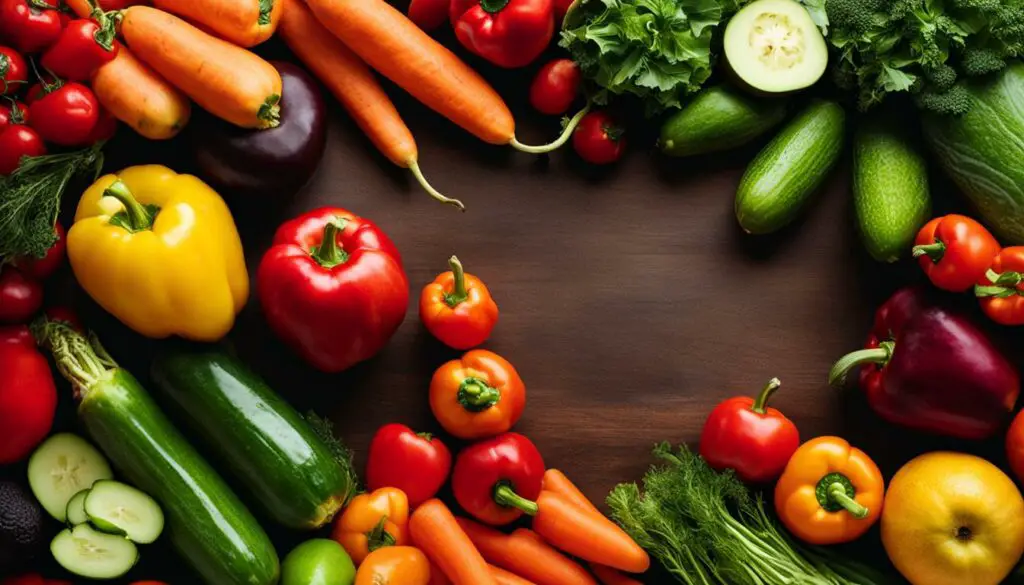
Under the SNAP program, eligible foods include a wide range of items that can help individuals and families maintain a healthy and balanced diet. These foods are essential for providing the necessary nutrients and promoting overall well-being. Here are some of the eligible food categories:
Fruits and Vegetables
- Fresh fruits like apples, oranges, and bananas
- Fresh vegetables such as spinach, broccoli, and carrots
- Frozen fruits and vegetables without added sugars or sauces
- Canned fruits and vegetables with no added sugars or high sodium content
Dairy Products
- Milk, including cow’s milk, lactose-free milk, and plant-based milk alternatives (such as almond or soy milk)
- Cheese, including varieties like cheddar, mozzarella, and Swiss
- Yogurt, plain or flavored, with no added sugars
Meat, Fish, and Poultry
- Lean cuts of beef, pork, and lamb
- Chicken, turkey, and other poultry products
- Fish, including fresh, frozen, and canned options (such as tuna or salmon)
Cereals and Grains
- Whole grain bread
- Whole grain cereals without added sugars
- Rice, pasta, and other whole grain options
Other Staple Foods
- Beans and legumes
- Eggs
- Peanut butter
- Soup, broth, and canned goods
It’s important to note that these are just a few examples of the eligible foods under the SNAP program. The program aims to provide individuals and families with access to nutritious options that contribute to a healthy lifestyle. By choosing a variety of these eligible foods, SNAP beneficiaries can create well-rounded meals that meet their dietary needs.
Ineligible Foods under the SNAP Program
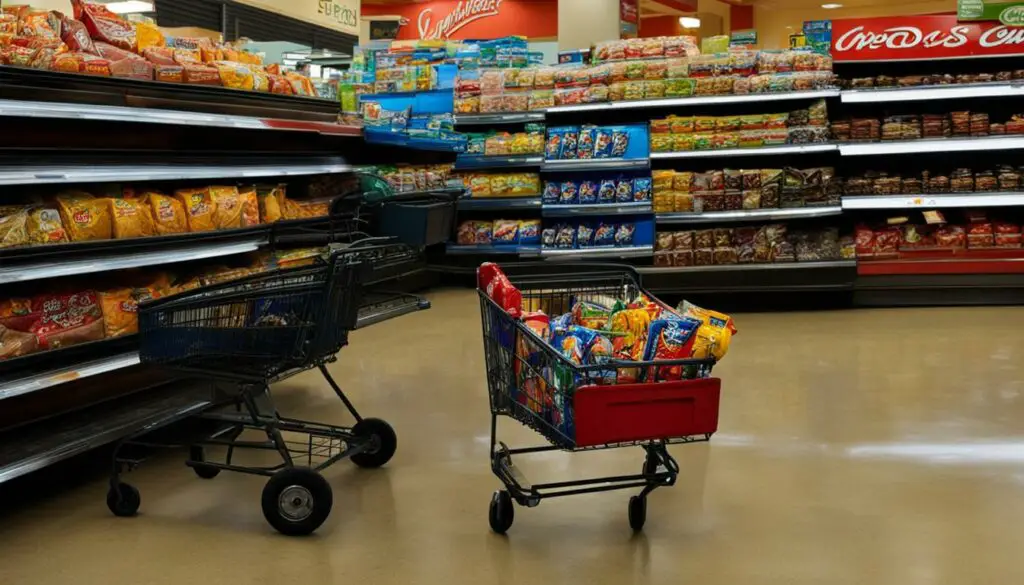
While the SNAP program provides opportunities to purchase a wide range of food items, it’s important to note that there are specific ineligible foods. Understanding which items cannot be purchased with SNAP benefits helps individuals make informed decisions about their purchases.
1. Alcoholic Beverages
Alcoholic beverages are not eligible for purchase using SNAP benefits. This includes beer, wine, and spirits. The program aims to provide nutritious food options and does not support the purchase of alcoholic beverages.
2. Tobacco Products
Tobacco products such as cigarettes, cigars, and chewing tobacco are not eligible for purchase with SNAP benefits. The program focuses on ensuring access to essential food items and does not support tobacco-related purchases.
3. Vitamins and Supplements
Vitamins and dietary supplements are also not eligible for purchase using SNAP benefits. While these items can contribute to overall health, the program’s guidelines restrict their inclusion as eligible items.
4. Live Animals (Except Certain Exceptions)
In general, live animals cannot be purchased using SNAP benefits. However, there are some exceptions depending on specific circumstances, including the use of SNAP benefits to purchase live seafood or other aquatic products.
5. Nonfood Items
Nonfood items like cleaning supplies and pet food are ineligible for purchase using SNAP benefits. The program focuses on supporting the purchase of essential food items necessary for a balanced diet.
Understanding the ineligible foods under the SNAP program helps ensure that individuals utilize their benefits appropriately and make informed decisions about their purchases.
| SNAP Ineligible Foods | Reason |
|---|---|
| Alcoholic beverages | Focus on nutritious food options |
| Tobacco products | Program restricts tobacco-related purchases |
| Vitamins and supplements | Not included in the program’s guidelines |
| Live animals (except certain exceptions) | Some exceptions for live seafood or aquatic products |
| Nonfood Items | Focus on essential food items |
Efforts to Include Vitamins in the SNAP Program
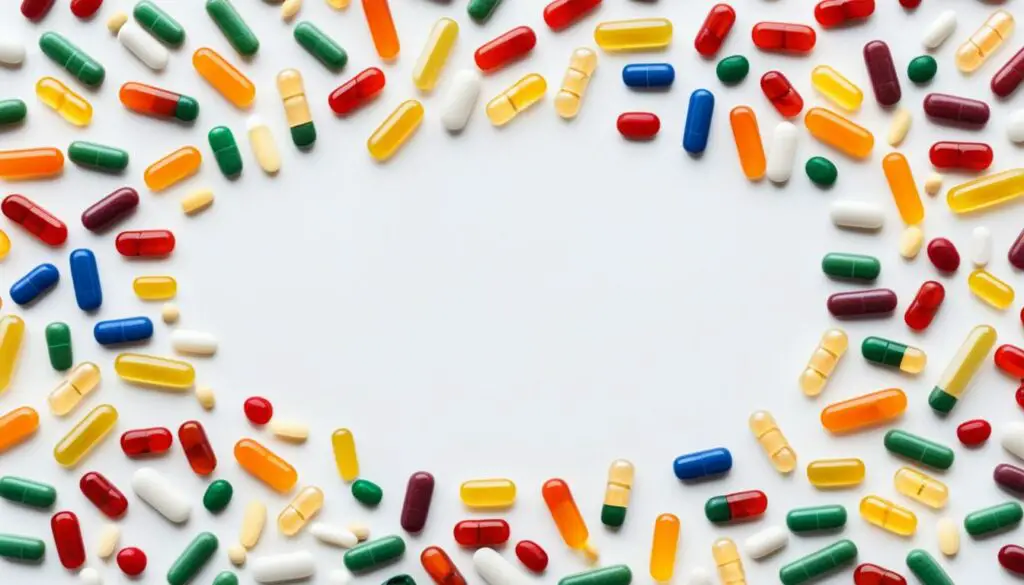
Recognizing the importance of vitamins and supplements for maintaining good health, organizations, lawmakers, and health experts have made efforts to include these dietary essentials in the SNAP program. While currently not eligible for purchase, there is hope that multivitamin-minerals will be accepted in the future. The inclusion of vitamins in the SNAP program would significantly improve access to essential nutrients for low-income individuals and families.
“Vitamins play a crucial role in supporting overall health and well-being,” says Dr. Jane Peterson of the National Health Association. “By including vitamins and dietary supplements in the SNAP program, we can ensure that all individuals, regardless of income, have access to necessary nutrients.”
Advocates for inclusion argue that vitamins are an integral part of a balanced diet and can help address nutritional deficiencies that are prevalent in low-income populations. By expanding the range of eligible items, the SNAP program would promote greater health equity and offer individuals the opportunity to make more informed choices about their nutrition.
Vitamins: Key Benefits and Their Impact on Health
Vitamins are essential for various bodily functions, including immunity, energy metabolism, and the development of bones and tissues. They play a vital role in preventing deficiency-related diseases such as scurvy, rickets, and beriberi. Additionally, research suggests that adequate vitamin intake can reduce the risk of chronic conditions like heart disease, cancer, and osteoporosis.
By incorporating vitamins into the SNAP program, individuals who currently struggle to afford these supplements will have the means to enhance their overall health and well-being. Ensuring access to vitamins for vulnerable populations empowers individuals to take control of their health and pursue a more balanced and nutritious lifestyle.
Proposed Guidelines for Including Vitamins in SNAP
Efforts to include vitamins in the SNAP program are accompanied by proposed guidelines to ensure the appropriate use of benefits and the availability of eligible vitamins. These guidelines may include:
- Requiring vitamins to meet specific quality standards and be labeled with accurate nutritional information.
- Limiting the availability of vitamins to those that are safe, proven effective, and in line with dietary recommendations.
- Educating SNAP recipients on the benefits and proper dosage of vitamins through nutrition counseling and resources.
Implementing these guidelines would help prevent the misuse of SNAP benefits while promoting the responsible use of vitamins for improved health outcomes.
The Road to Inclusion: Challenges and Progress
Despite widespread recognition of the need for vitamin inclusion, several challenges remain in expanding the SNAP program to cover these essential supplements. Budget constraints, logistical complexities, and concerns about misuse and abuse of benefits are among the obstacles that need to be addressed.
However, progress has been made in several states where pilot programs and initiatives have been launched to test the feasibility and impact of including vitamins in the SNAP program. These initiatives aim to gather data and insights to inform future national policies and guidelines.
Vitamins are a vital component of a healthy diet, and their inclusion in the SNAP program would ensure that no individual is left behind when striving for optimal nutrition. With continued support and advocacy, the vision of vitamin and dietary supplement inclusion within SNAP can become a reality, fostering greater health equity and overall well-being for all.
| Vitamins Included in SNAP Program | Key Benefits |
|---|---|
| Vitamin C | Supports immune system function and collagen production |
| Vitamin D | Aids in calcium absorption and promotes bone health |
| Vitamin B12 | Assists in red blood cell production and nerve function |
Where Can SNAP Benefits Be Used?
SNAP benefits provide valuable assistance to eligible individuals and families, allowing them to purchase essential food items. These benefits can be used at a variety of approved retailers, ensuring access to nutritious food options. Here are some of the places where SNAP benefits are accepted:
-
Grocery Stores
Grocery stores nationwide participate in the SNAP program, making it convenient for beneficiaries to shop for their food needs. Popular grocery store chains such as Walmart, Safeway, and Aldi gladly accept SNAP benefits, providing a wide range of food options to choose from.
-
Farmer’s Markets
Supporting local farmers and accessing fresh produce is made easier with SNAP benefits. Many farmer’s markets now accept SNAP payments, allowing beneficiaries to buy locally grown fruits and vegetables. The United States Department of Agriculture (USDA) provides a SNAP Retailer Locator to help individuals find farmer’s markets near them.
-
Online Grocery Delivery Services
In today’s digital age, online grocery shopping has become increasingly popular. Beneficiaries can now use SNAP benefits to make online purchases from eligible retailers, including Amazon. This convenience makes it easier for individuals who may have difficulty physically getting to a store or prefer the convenience of home delivery.
It’s important to note that not all grocery stores or farmer’s markets accept SNAP benefits, so beneficiaries can use the SNAP Retailer Locator or consult with their local SNAP office to find participating retailers near them. By expanding the locations where SNAP benefits can be used, the program aims to provide greater accessibility to nutritious food options for those in need.
Using SNAP Benefits at Farmer’s Markets
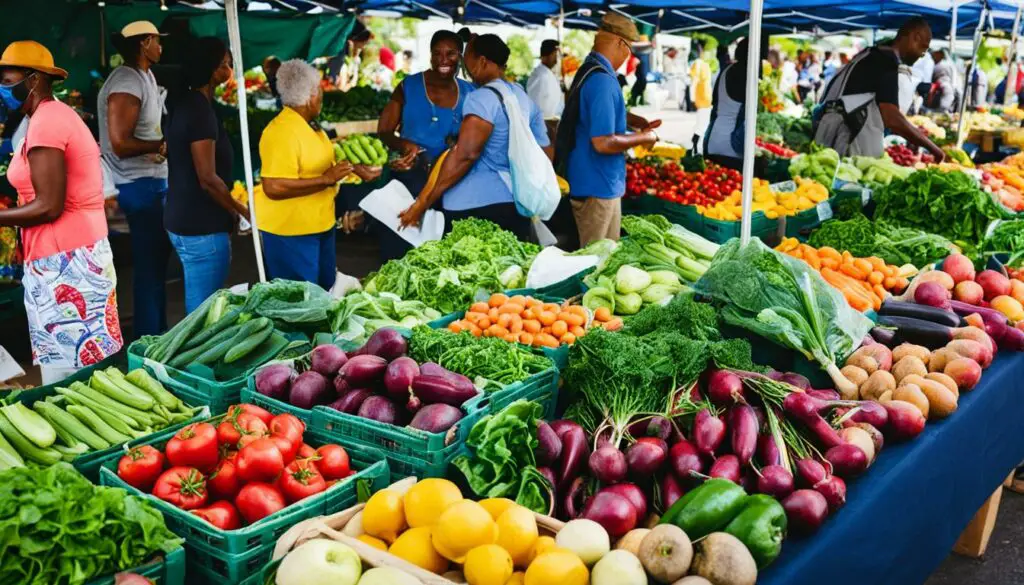
Farmer’s markets offer a fantastic opportunity for SNAP beneficiaries to access fresh and locally grown produce. These markets have become eligible venues for using SNAP benefits, allowing individuals and families to make healthier food choices. With over 1,500 farmers markets across forty-four states participating in the program, SNAP beneficiaries can now have greater access to nutritious foods. To facilitate the use of SNAP benefits, many farmer’s markets have adopted a convenient app called TotilPay Go for EBT transactions.
TotilPay Go simplifies the process of using SNAP benefits at farmer’s markets, ensuring a seamless shopping experience. SNAP beneficiaries can now enjoy the convenience of purchasing fresh fruits, vegetables, and other items directly from local growers and producers.
Farmer’s markets not only provide access to nutritious food but also promote local agriculture and support local farmers. By using SNAP benefits at these markets, individuals and families contribute to their local economy and help build a sustainable food system.
Supporting Local Communities and Healthier Food Choices
Farmer’s markets play a crucial role in supporting local communities and fostering a healthier food environment. By connecting SNAP beneficiaries with fresh, locally sourced food, these markets contribute to improved nutrition and overall well-being. Additionally, the direct interaction with farmers and producers enhances education about food origins, farming practices, and the benefits of consuming locally grown produce.
“By using SNAP benefits at farmer’s markets, individuals and families can access fresh, nutritious food while supporting local agriculture and fostering healthier communities.”
Furthermore, shopping at farmer’s markets allows SNAP beneficiaries to explore a diverse range of seasonal produce and discover new flavors and varieties. By incorporating these fresh ingredients into their meals, individuals and families can create wholesome and delicious dishes that contribute to their overall health.
| Benefits of Using SNAP at Farmer’s Markets | Benefits of Supporting Local Agriculture |
|---|---|
|
|
Using SNAP benefits at farmer’s markets not only provides access to nutritious food but also empowers individuals and families to make informed food choices. By supporting local agriculture, SNAP beneficiaries contribute to the growth and sustainability of their communities while enjoying the many health benefits that fresh, locally grown produce offers.
Penalties for Misusing SNAP Benefits
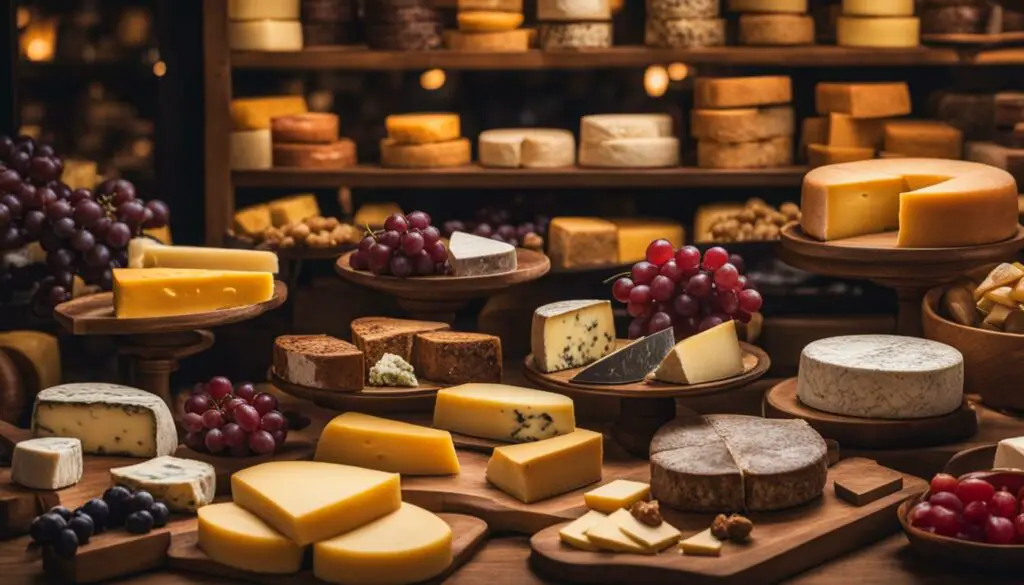
Misusing SNAP benefits can have serious consequences, including penalties and the loss of assistance. It is important to understand the rules and regulations surrounding the use of SNAP benefits to avoid any legal issues.
When someone misuses SNAP benefits, the Department of Health and Human Services takes action to investigate the situation. Noncompliant purchases are carefully monitored, and if it is determined that the law was broken, penalties are imposed.
The penalties for misusing SNAP benefits vary depending on the severity and frequency of the offense. For a first offense, individuals may face a loss of food assistance for three months. However, subsequent offenses can result in longer periods of ineligibility, potentially up to permanent disqualification from the program.
It is crucial to remember that SNAP benefits are intended to help low-income individuals and families access nutritious food. Misusing these benefits not only undermines the purpose of the program but also takes away resources from those who truly need them.
“Misusing SNAP benefits can have serious consequences, including penalties and the loss of assistance.”
Examples of Misusing SNAP benefits:
- Purchasing non-food items such as cleaning supplies, cosmetics, and pet food with SNAP benefits
- Using someone else’s EBT card without permission
- Selling SNAP benefits for cash or other non-allowable goods
Consequences of Misusing SNAP benefits:
| Penalty | Description |
|---|---|
| First Offense | Loss of food assistance for 3 months |
| Subsequent Offenses | Longer periods of ineligibility, potentially permanent disqualification |
Misusing SNAP benefits not only jeopardizes a person’s eligibility for food assistance but also violates the trust and integrity of the program. It is essential to use SNAP benefits responsibly and within the guidelines set by the program.
The Future of Multivitamins and SNAP
There is ongoing advocacy to include multivitamins and other dietary supplements in the SNAP program. Health experts and organizations recognize the importance of these supplements for overall health and nutrition. While the inclusion of multivitamins is not currently allowed, there is hope for future changes.
“Multivitamins play a crucial role in supporting optimal health and filling nutritional gaps. Their inclusion in the SNAP program would ensure that low-income individuals and families have access to essential vitamins and minerals.” – Dr. Lisa Johnson, Nutritionist
As the SNAP program aims to provide food assistance to low-income Americans, expanding the eligibility criteria to include multivitamins could further enhance the nutritional support provided. Many individuals may struggle to afford these supplements on their own, making it even more important for them to be included in the program.
The Benefits of Multivitamins
Multivitamins offer a convenient and accessible way to meet essential nutrient requirements. They can help bridge nutritional gaps, particularly for those who may not have a consistently balanced diet. By including multivitamins in the SNAP program, individuals and families would have access to a broader range of nutrients to support their overall health and well-being.
Incorporating multivitamins into the SNAP program would also align with the growing emphasis on preventive healthcare. Providing individuals with the necessary vitamins and minerals can contribute to the prevention of nutrient deficiencies and associated health conditions.
Furthermore, multivitamins could have a positive impact on healthcare costs. By promoting preventive measures and supporting overall health, the inclusion of multivitamins in the SNAP program may help reduce the incidence of certain diet-related diseases, leading to potential cost savings in the long run.
Advocacy and Future Possibilities
Efforts are already underway to advocate for the future inclusion of multivitamins and other dietary supplements in the SNAP program. Various organizations are working together to highlight the importance of these supplements in supporting overall health and nutrition.
It is essential for policymakers to consider the potential benefits of including multivitamins in the SNAP program. This could involve reviewing current guidelines and regulations to accommodate the changing landscape of nutritional needs and supplement usage.
While significant changes to the SNAP program require careful consideration, the potential impact of including multivitamins is worth exploring. Continued advocacy and research will play a crucial role in shaping the future of nutrition assistance programs like SNAP.
The Road Ahead
The future inclusion of multivitamins and other dietary supplements in the SNAP program holds promise for improved health outcomes among low-income individuals and families. Recognizing the importance of these supplements in maintaining overall health and nutrition is a step toward a more comprehensive approach to food assistance.
As discussions and advocacy efforts continue, it remains crucial to prioritize the well-being of SNAP beneficiaries and work toward inclusive policies that address their nutritional needs. The future could bring positive changes and increased access to multivitamins, supporting the overall health and vitality of those who rely on the SNAP program.
| Benefits of Including Multivitamins in SNAP | Implications |
|---|---|
| Enhanced nutritional support for low-income individuals and families | A more comprehensive approach to food assistance |
| Bridge nutritional gaps and prevent nutrient deficiencies | Promotion of preventive healthcare |
| Potential reduction in healthcare costs through preventive measures | Possible long-term cost savings |
Conclusion
In conclusion, while food stamps (SNAP benefits) provide support for low-income households to purchase a variety of essential food items, it is important to note that vitamins and dietary supplements are not covered under the program. The SNAP program aims to ensure access to nutritious food, but it does not extend to nutritional supplement purchases.
Understanding the eligible and ineligible items is crucial for making informed decisions while using food stamps. Eligible foods include fruits, vegetables, meat, poultry, dairy products, cereals, and other staple food items. On the other hand, items such as vitamins, supplements, alcoholic beverages, tobacco products, and non-food items like cleaning supplies or pet food cannot be purchased with SNAP benefits.
Efforts are underway to include multivitamins and dietary supplements within the scope of the SNAP program. Health experts and organizations recognize the importance of these supplements for overall health and nutrition. While they are currently not eligible for SNAP purchase, there is hope for future changes that may accommodate nutritional supplement purchases through food stamps.
FAQ
Can food stamps purchase vitamins?
No, vitamins and dietary supplements are not eligible for purchase with food stamps (SNAP benefits).
What items can be purchased with food stamps?
Food stamps can be used to purchase a variety of food items, including fruits and vegetables, meat, poultry, fish, dairy products, breads and cereals, snack foods, non-alcoholic beverages, seeds, and plants that produce food for the household.
What items are not eligible for purchase with food stamps?
Ineligible items for purchase with food stamps include vitamins, medicines, supplements, alcoholic beverages, tobacco products, live animals (with some exceptions), and nonfood items such as pet food, cleaning supplies, and cosmetics.
What is the SNAP program?
The Supplemental Nutrition Assistance Program (SNAP) is a federal program that provides food assistance to low-income Americans. It is the largest nutrient program, estimated to help feed 9.5 million families with children.
What are the eligible foods under the SNAP program?
Eligible foods under the SNAP program include fruits and vegetables, dairy products, meat, fish, poultry, cereals, and other staple foods.
What are the ineligible foods under the SNAP program?
Ineligible foods under the SNAP program include alcoholic beverages, tobacco products, vitamins, supplements, live animals (except certain exceptions), cleaning supplies, and pet food.
Are there efforts to include vitamins in the SNAP program?
Yes, there are ongoing efforts to include multivitamins and other dietary supplements in the SNAP program. Health experts and organizations recognize the importance of these supplements for overall health and nutrition.
Where can SNAP benefits be used?
SNAP benefits can be used at approved retailers, including grocery stores, farmer’s markets, and online grocery delivery services. Retailers such as Walmart, Amazon, Safeway, and Aldi are accepted options for SNAP purchases.
Can SNAP benefits be used at farmer’s markets?
Yes, farmer’s markets have become eligible venues for using SNAP benefits. Over 1,500 farmers markets in forty-four states use an app called TotilPay Go for EBT transactions.
What are the penalties for misusing SNAP benefits?
Misusing SNAP benefits can result in severe penalties. The first offense can lead to a loss of food assistance for three months, while subsequent offenses can result in longer periods of ineligibility. The Department of Health and Human Services investigates noncompliant purchases, and a hearing may be held to determine if the law was broken.
What is the future of multivitamins and the SNAP program?
While multivitamins and dietary supplements are currently not eligible for purchase with SNAP benefits, there is ongoing advocacy to include them in the program. Efforts are being made to recognize the importance of these supplements for overall health and nutrition.
Source Links
- https://www.fns.usda.gov/snap/eligible-food-items
- https://standupwireless.com/blog-can-i-buy-vitamins-with-my-snap-card-what-you-need-to-know-about-supplements-and-snap/
- https://whps.sdes.ucf.edu/what-you-can-buy-with-food-snap-benefits/
See also:
Leave a Reply